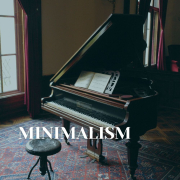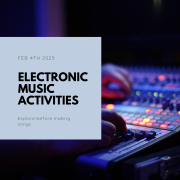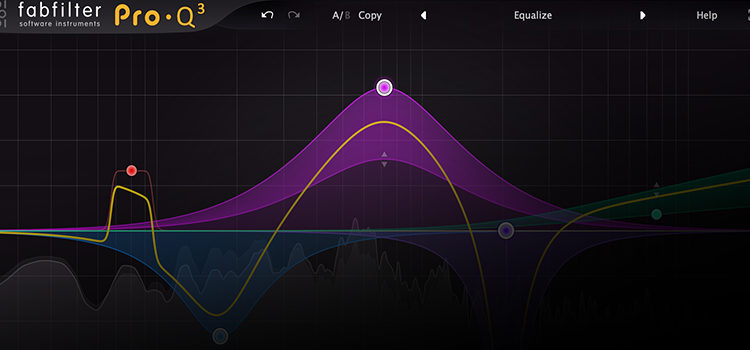How AI is Helping Musicians Break Free From Unoriginality
When it comes to creating music, there is a never-ending tension between the desire to innovate and the pressure to make money. Many musicians find themselves trapped in a cycle of producing unoriginal music that fits neatly into pre-existing categories, all in the name of pleasing their audiences and making a profit. But what if there was a way to break free from this cycle?
We recently talked about slowing down to learn new skills, but let’s have a view on the the most techno-technology out there.
Enter artificial intelligence (AI), a tool that is increasingly being used by musicians to push the boundaries of what is possible in music production. As AI been bringing a lot of controversy in the artist community because it is a game changer in democratizing its access, I wanted to focus on the positive aspects.
Using AI to Generate Ideas We Wouldn’t Think Of
One of the reasons why musicians tend to produce unoriginal music is because they are constantly aware of the latest trends and what is popular among their audiences. In order to make money, they feel pressured to produce music that fits neatly into these trends, rather than exploring new territory. This results in a homogenization of music, where everything starts to sound the same. If you read this blog often you’ll know that we often refer to the “success trap” where one tries to repeat a success story and that leads to nothing.
AI, on the other hand, is not aware of these trends. It doesn’t have a preconceived notion of what is popular or what will sell. Instead, it is able to analyze vast amounts of data to identify patterns and connections that humans might not be able to see. This makes it a powerful tool for innovation in music production.
For example, AI can analyze existing music and identify common elements that could be used to create something new. It can also generate entirely new ideas that humans might not have thought of. By using AI, musicians can break free from the constraints of their own creativity and explore new territory that they might not have discovered otherwise.
AI Can Recycle Old Ideas In Innovative Ways
But AI is not just a tool for creating entirely new music. It can also be used to recycle existing ideas in innovative ways. For example, AI can take an existing melody and transpose it to a different key, or it can apply different rhythmic patterns to a familiar chord progression. By using AI in this way, musicians can create something that feels fresh and new, while still drawing on familiar elements that their audiences will recognize.
Of course, using AI in music production is not without its challenges. Some musicians worry that it will make their work feel less authentic, or that it will take away the human element that makes music so special. But the truth is that AI is just a tool, and like any tool, it can be used in a variety of ways. Musicians who embrace AI as a tool for innovation and exploration can use it to enhance their own creativity, rather than replacing it.
AI Tools For Making Electronic Music
- Amper Music: A platform that uses AI to generate original music tracks based on user inputs for genre, mood, and tempo.
- AIVA (Artificial Intelligence Virtual Artist): A composer and music generator that uses deep learning algorithms to create original pieces of music in different genres.
- Melodrive: A tool that uses AI to create personalized music for video games and other interactive media, adapting the music to the user’s behavior and emotions.
- Google Magenta: An open-source project that aims to advance the state of the art in machine learning for music and art generation, providing tools for creating and exploring new musical experiences.
- Amadeus Code: A tool that uses AI to help songwriters generate new musical ideas, providing suggestions for chord progressions and melodies based on user inputs.
- Humtap: A platform that uses AI to help users create original music by providing suggestions for chords, melodies, and lyrics based on their inputs.
- Emergent Drums: generate drum kits with a few clicks. Powerful!
- AI Kitchen: Still not public but this one looks promising. It is basically the Midjourney of audio. You enter prompts and the AI provides ideas.
How To Spot If A Tool Is Actually AI and Not Something Else:
It can be difficult to determine whether a music production tool that is described as AI-driven is really using AI, as the term “AI” is often used loosely and can mean different things in different contexts. I’ve noticed a number of plugins that say they use AI but aren’t really. However, here are some things to look for that may indicate that a tool is using AI:
- Machine learning algorithms: Many AI-driven music production tools use machine learning algorithms to analyze and generate music. If a tool claims to use AI, it is worth looking into what specific machine learning algorithms it is using, and how they are being applied.
- Training data: AI systems require large amounts of training data to learn from. If a music production tool claims to use AI, it is worth checking what training data it has been trained on, and whether it has been trained on a sufficiently diverse and representative set of data.
- Output variability: One hallmark of AI systems is that they can generate a wide range of outputs based on a given input. If a music production tool is able to generate a large number of unique tracks or variations based on user inputs, this may be a sign that it is using AI.
- Expert endorsements: If a music production tool is endorsed by experts in the field of AI or music production, this may be a sign that it is using legitimate AI techniques.
- Transparency: Finally, it’s important to look for transparency in how the tool is described and marketed. If a tool is vague about how it uses AI or makes unrealistic claims about what it can do, this may be a red flag.
Ultimately, the best way to determine whether a music production tool is really using AI is to do some research and ask questions. Look for reviews from reputable sources, ask the developers about their AI techniques, and talk to other users to get a sense of how the tool performs in practice.
Generative vs AI
Generative music is the ancestor of AI music. What we do in the modular realm is basically prehistoric cavemen stuff compared to the high tech approach of modelling systems. Modular is sort of relying on boolean logic and basic operations. I think it’s important to explore generative music to understand how machines are there to create material for you to use in your music. Generative music will provide you multiple outputs of ideas based on parameters of your choice. Generative music is something that is important to understand if you’re looking to break writer’s block.
One flaw I like from AI is its lack of understanding good or bad ideas.
It just does things it knows how to do.
You can then take clumsy takes to turn them into ideas of yours. A bit like one joke from a toddler can be used to make some funny stories in adult ways.
So, to all the musicians out there who feel trapped in a cycle of unoriginality: it’s time to reconsider your approach. By embracing AI as a tool for innovation, you can break free from the constraints of what is popular and explore new territory that you might not have discovered otherwise. Whether you are creating entirely new music or recycling existing ideas in innovative ways, AI can help you push the boundaries of what is possible in music production.












Leave a Reply
Want to join the discussion?Feel free to contribute!